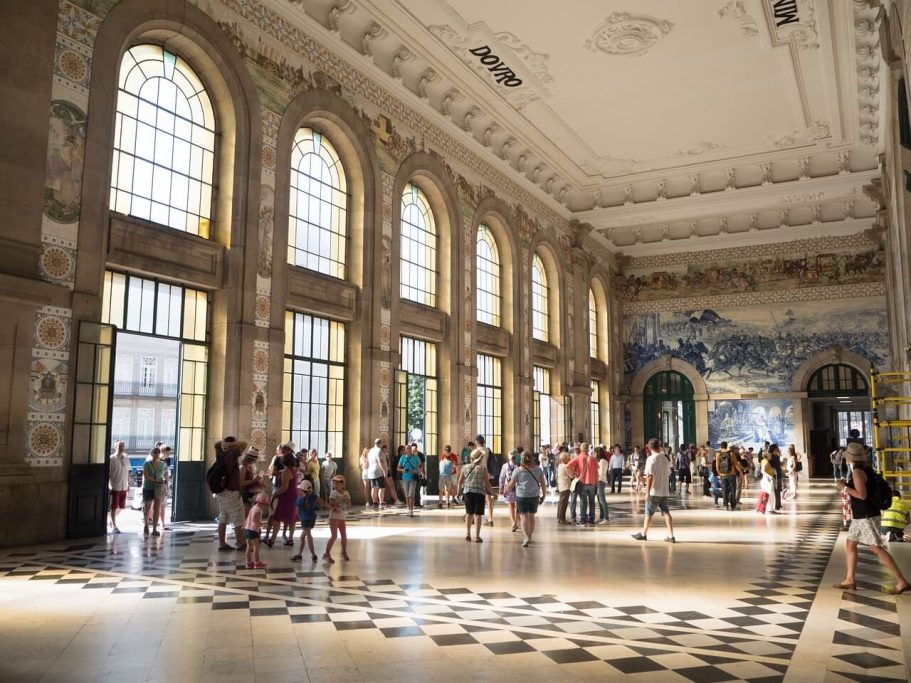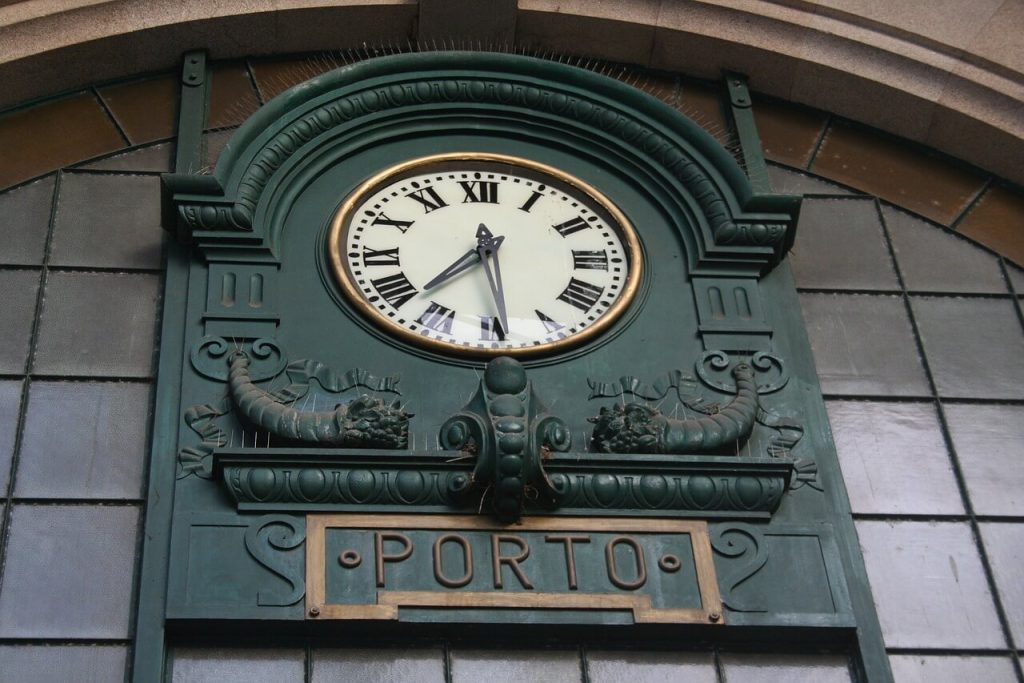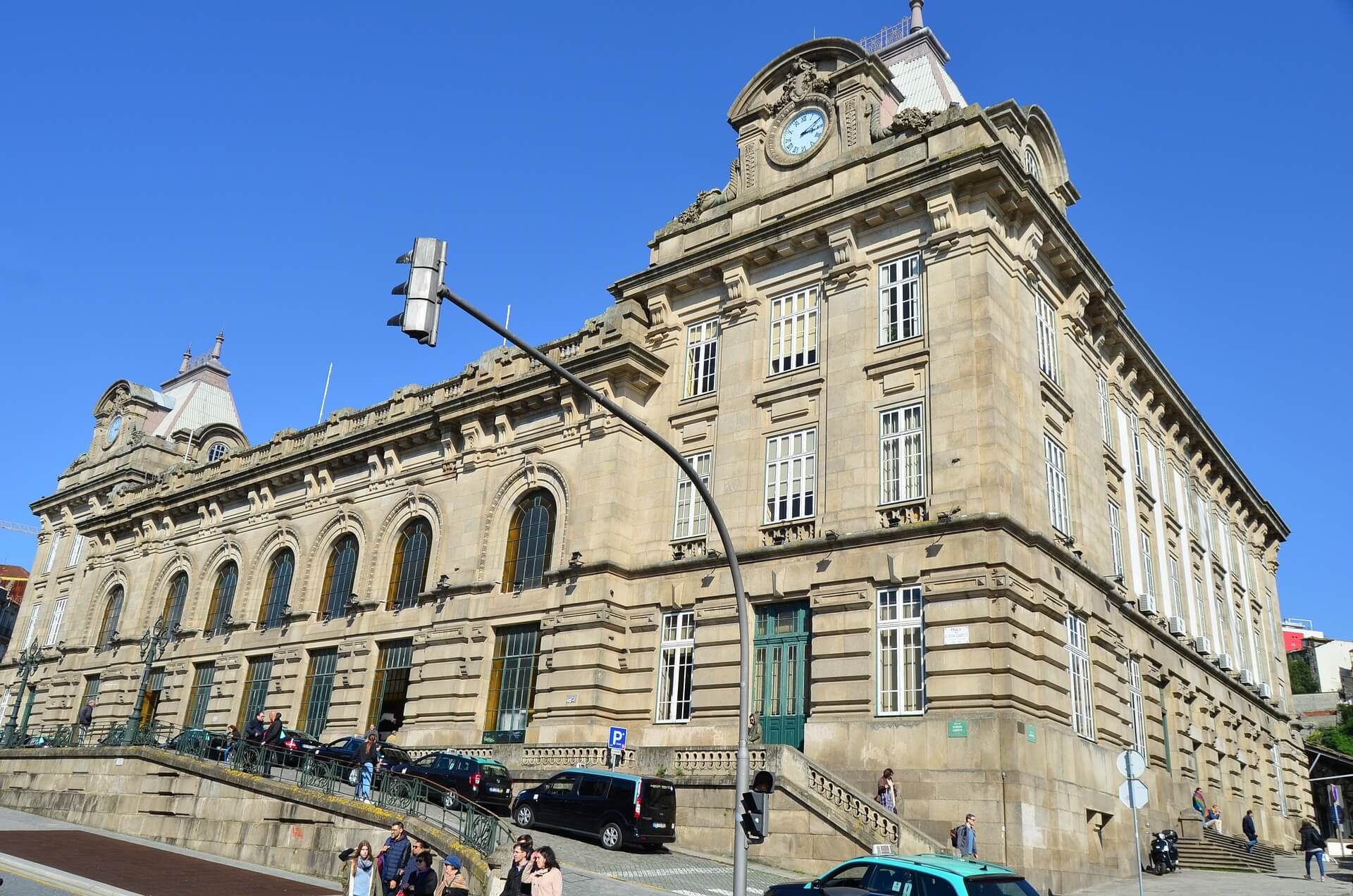The São Bento train station in Porto is a beautiful reflection of the city’s rich history and culture. Located in the historic center of Porto, the station is especially known for its tile panels, which cover the atrium with around twenty thousand tiles (551 square meters) installed between 1905 and 1906 by the painter Jorge Colaço. These tiles illustrate historical themes, especially from the north, and are a marvel to behold.

São Bento train station was built in 1916 on the site of a former Benedictine convent. The design of the station was the work of the Portuguese architect José Marques da Silva, who is known for his work on other historic buildings in Porto. The station has been an important starting point for train travel since then, and has been recognized as one of the most beautiful places in the city.

The interior of São Bento train station is spectacular. The lobby is where the tile panels that make it famous are located. These tiles illustrate historical themes, such as the battle of Valdevez, the presentation of Egas Moniz with his children to King Alfonso VII of León and Castile in the 12th century, the entry of King John I and Philippa of Lancaster into Porto in 1387, the conquest of Ceuta in 1415, life in the countryside, and a colorful frieze dedicated to the development of transportation in Portugal, culminating with the opening of rail lines.
These tile panels are a marvel to behold and offer a historical and cultural view of northern Portugal.
São Bento train station is much more than a simple train station: it is a reflection of Porto’s rich history and culture, which you shouldn’t miss on your visit to the city.
In addition to the beauty of the tile panels, São Bento train station is also an important starting point for train travel to various cities and regions of Portugal and Spain. You can take the train to the Alto Douro region (Régua), a beautiful wine region in northern Portugal, or to Viana do Castelo, a charming coastal city known for its beaches and historic buildings. You can also take the train to Braga or Guimarães, two cities full of history and culture. And if you want to travel further, São Bento train station offers train connections to Vigo, Spain, as well as Lisbon and Faro in southern Portugal.


São Bento train station is an emblematic place that reflects the rich history and culture of Porto and Portugal. The tile panels in the atrium are a marvel to behold and offer a historical and cultural view of northern Portugal. In addition, the station is an important starting point for train travel to various cities and regions of Portugal and Spain. If you’re planning a trip to Porto or Portugal in general, São Bento train station is a place you shouldn’t miss.
SUGGESTION:
It’s free, near Aliados, and the tiles are beautiful, so it’s definitely worth a look.






